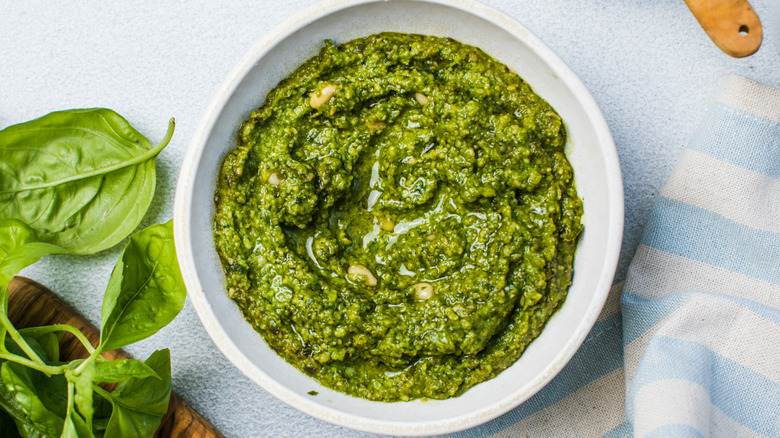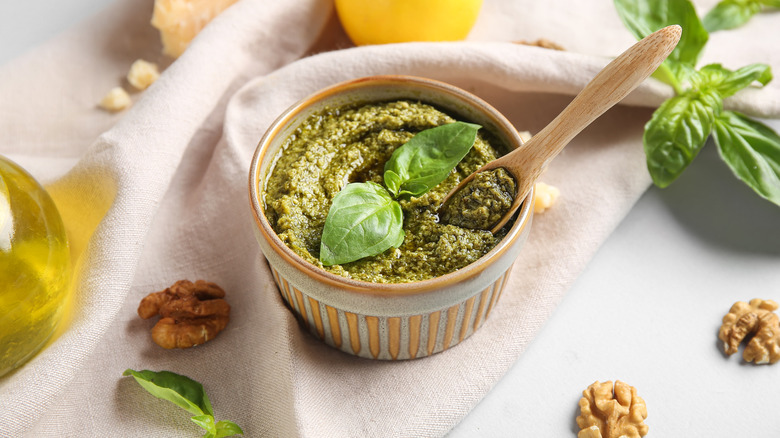Add Depth To Your Pesto With This Single Umami Ingredient
A classic pesto alla Genovese may be made with basil, garlic, olive oil, and parmesan, but pesto — which comes from the Italian verb "pestare," meaning "to crush or pound" — can actually be made from a number of different ingredients. Our food-saving magical garbage pesto (which is far more delicious than its name implies) uses up any green vegetable scraps you have on hand; but the pine nuts and parmesan aren't sacrosanct, either. Italian chef, Massimo Bottura, favors replacing pine nuts with breadcrumbs, which are more affordable and lend a buttery flavor. Chef Marcus Samuelsson, however, suggests a different pine nut alternative where a little goes a long way. The Takeout caught up with him at the Food Network New York City Wine & Food Festival, where he floated the idea of using miso paste.
Samuelsson is one of many Food Network celebrities who own restaurants you should visit, with a portfolio that includes one of the best Southern restaurants in New York City — Red Rooster — as well as an eatery that pays homage to his Swedish and Ethiopian roots, Hav & Mar. He respects food history and authenticity, but said, "I love actually adding miso into my pesto, so I'm not a traditionalist. Yeah, it just gives you this other umami flavor that's great." His recommendation is white miso, with just a small amount lending the right touch of savory flavor. Combined with Bottura's breadcrumbs, miso could make for a budget-friendly, yet chef-worthy pesto.
Different types of nuts also work well in pesto
If you want a protein-packed pesto but pricey pine nuts are out of your budget, chef Marcus Samuelsson suggests using a different nut that may only cost half as much. He told us, "I love almond [pesto] ... over-roasting the garlic, and then almonds in the pesto is delicious." Almonds can be used to replace the pine nuts in an otherwise Genovese-style pesto, but if you're into foraging, you could also use wild garlic as the green component instead of basil.
Other nuts can be "pesto-fied," as well. Pistachio pesto can be made with basil if you want to retain most of the elements of a more typical recipe, or you can use mint for a summery, refreshing flavor. Walnuts also go well with basil pesto, but the rich, oily nuts can complement the slightly bitter flavor of parsley, as well. You could even combine peanuts with cilantro, perhaps adding a dash of fish sauce and lime juice to create an Italian and Thai fusion pesto that's perfect for saucing wide rice noodles. This sauce doesn't need parmesan, but a pinch of Samuelsson's suggested miso paste might add the perfect hint of umami.

